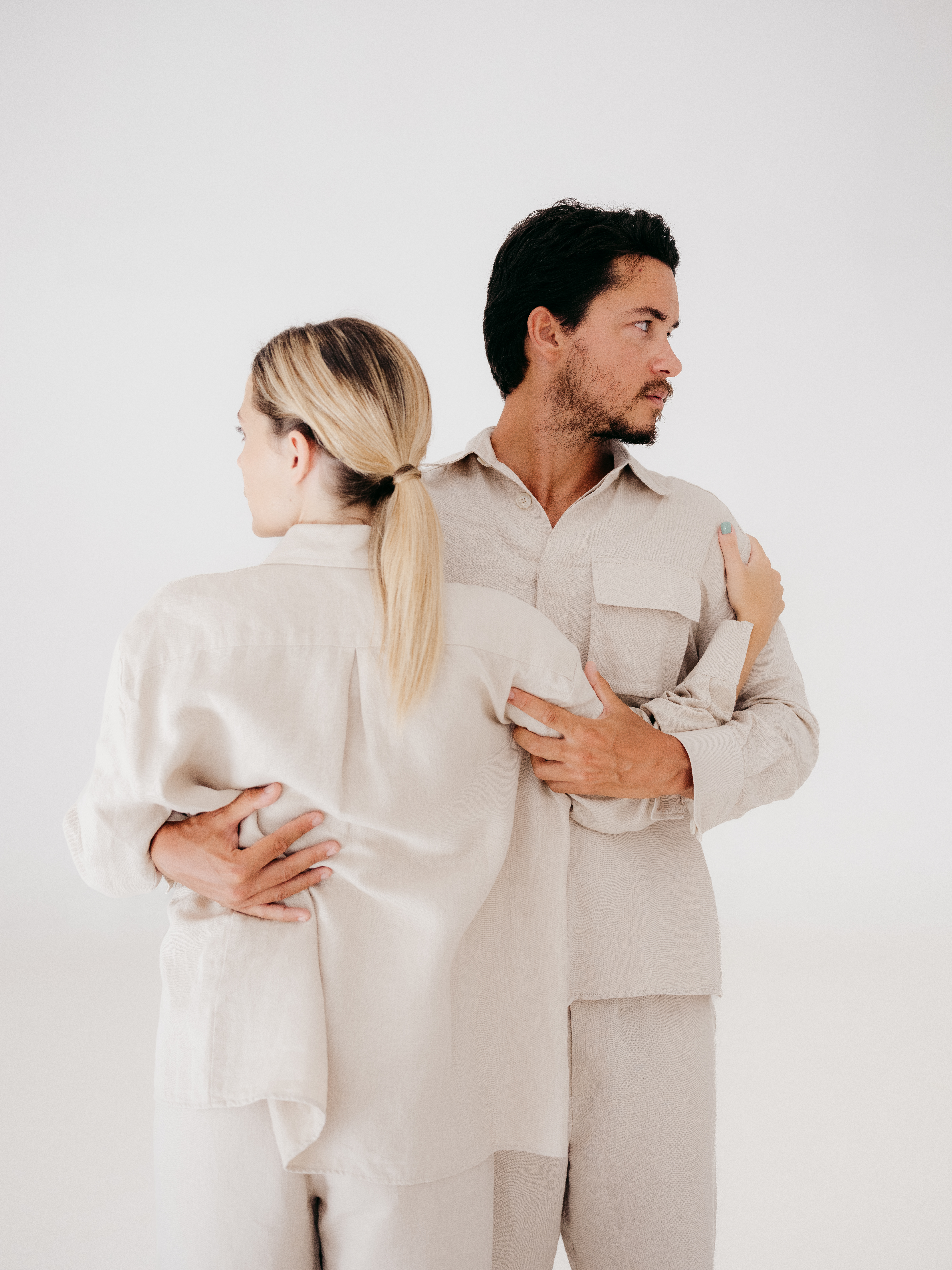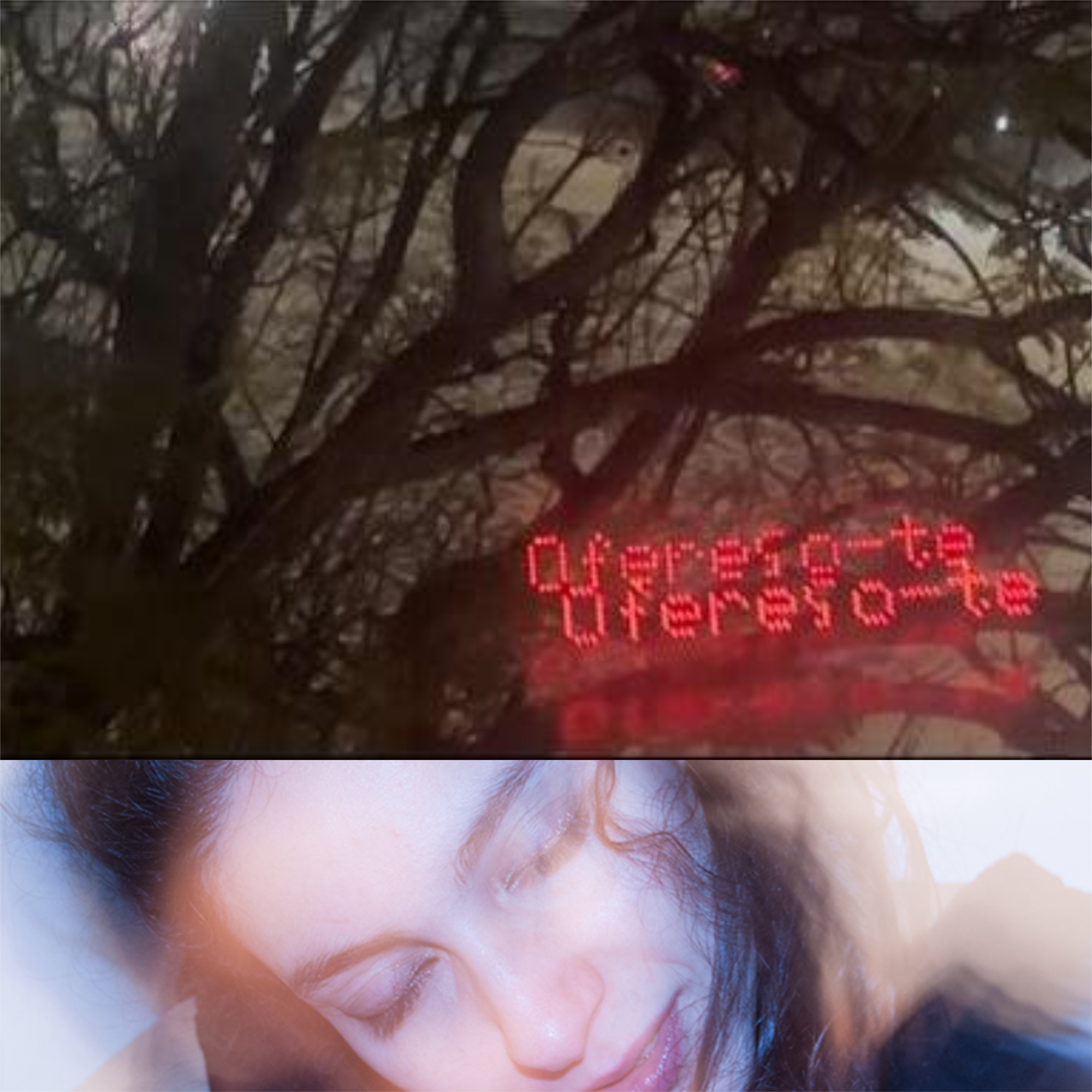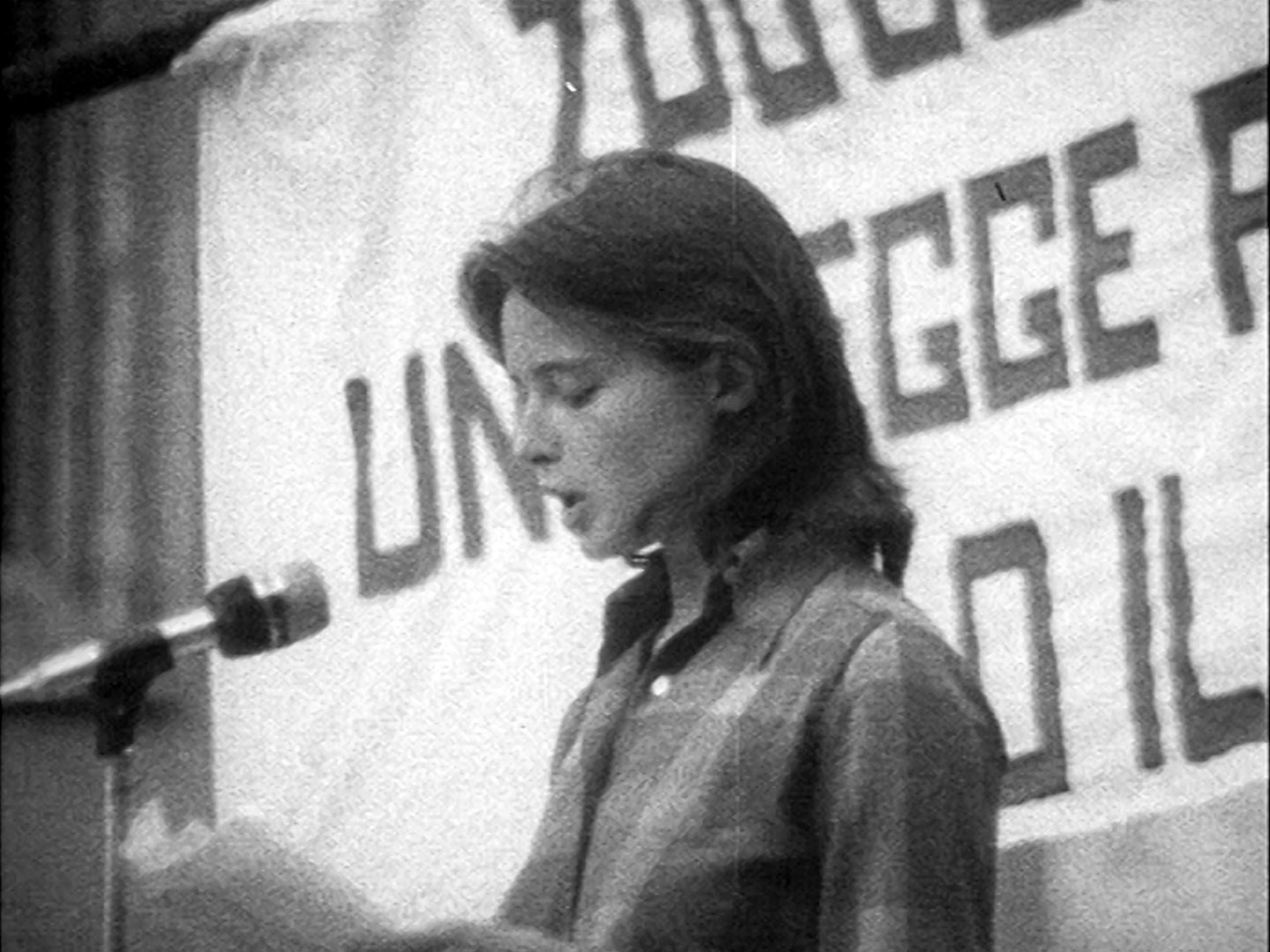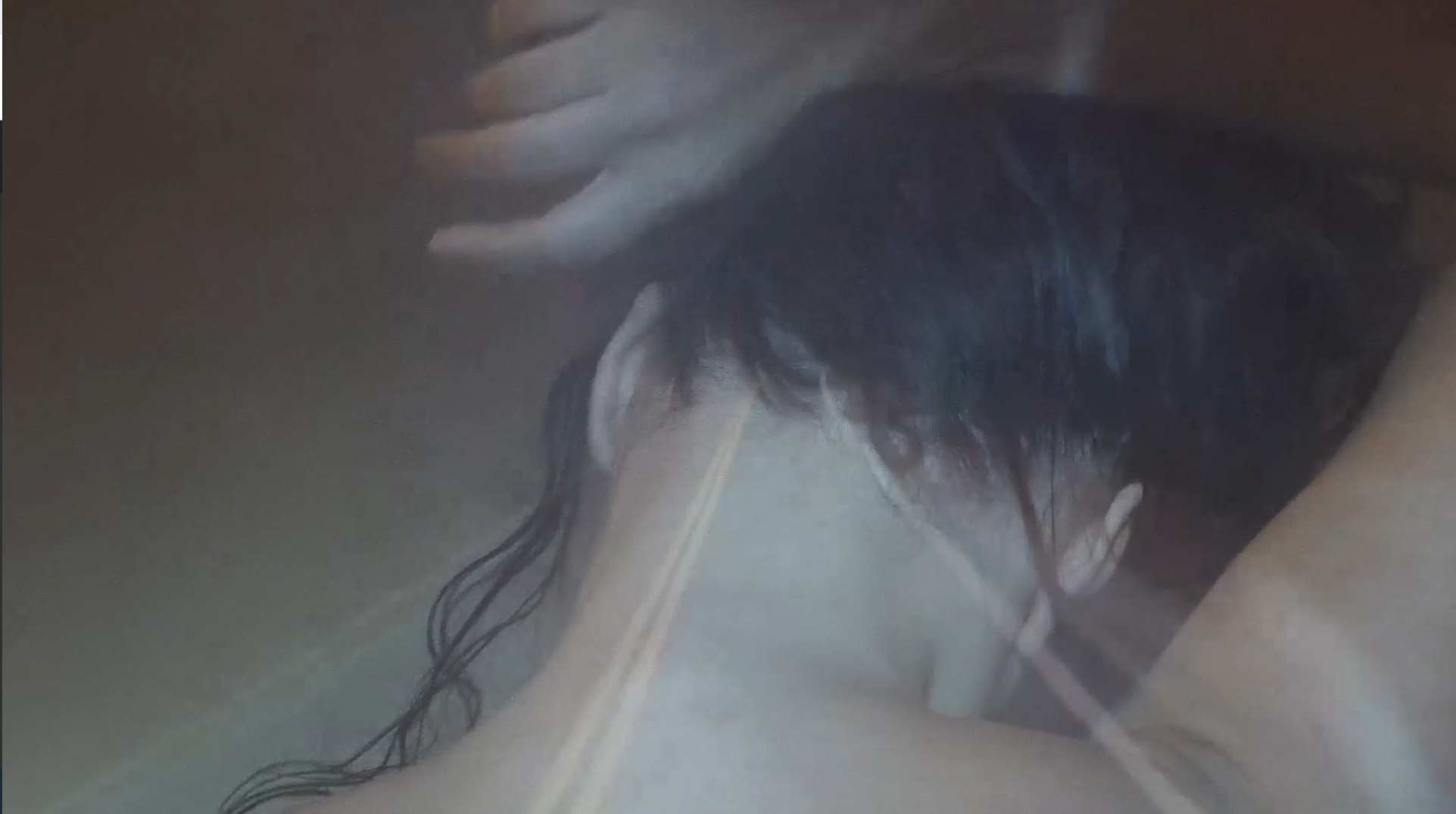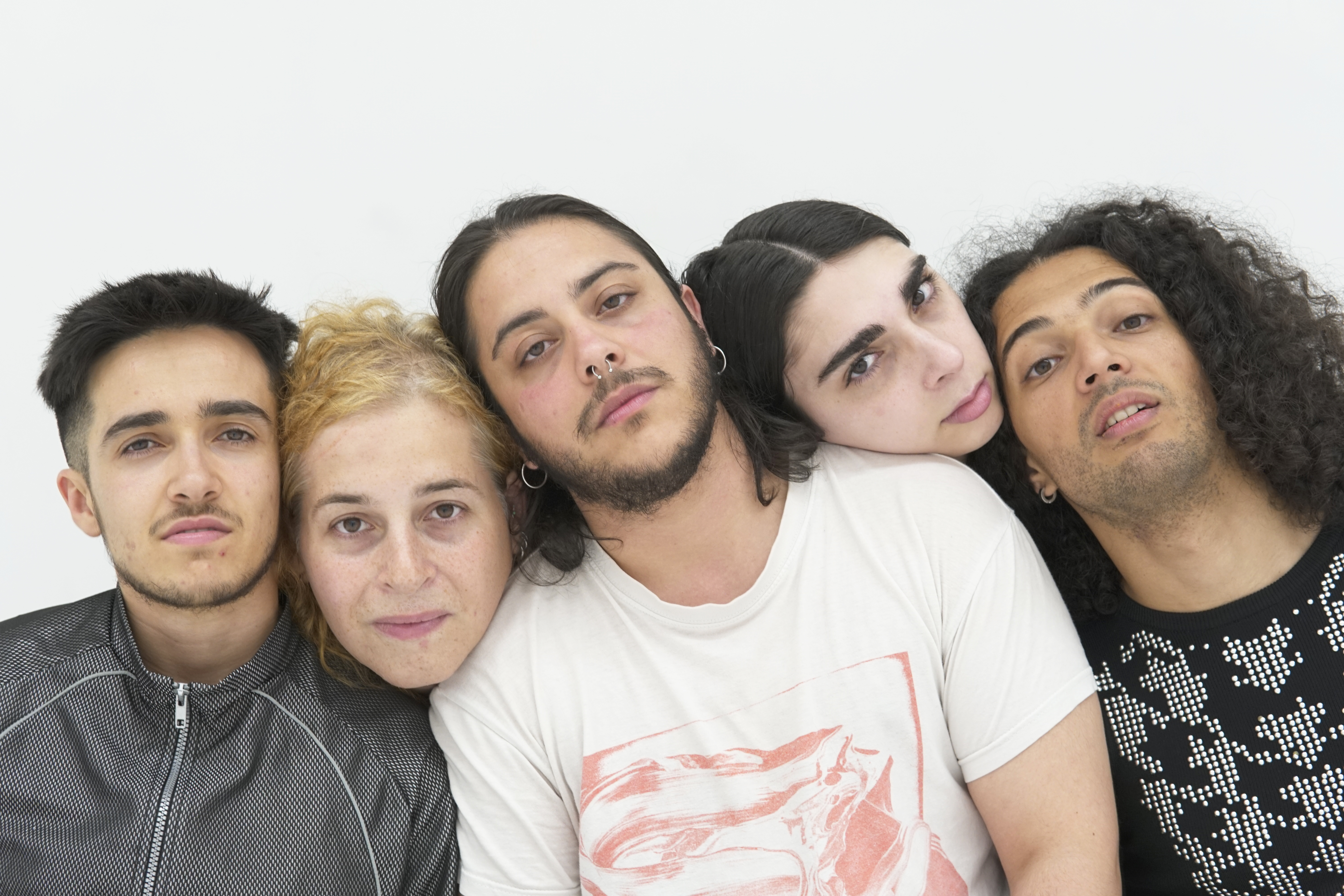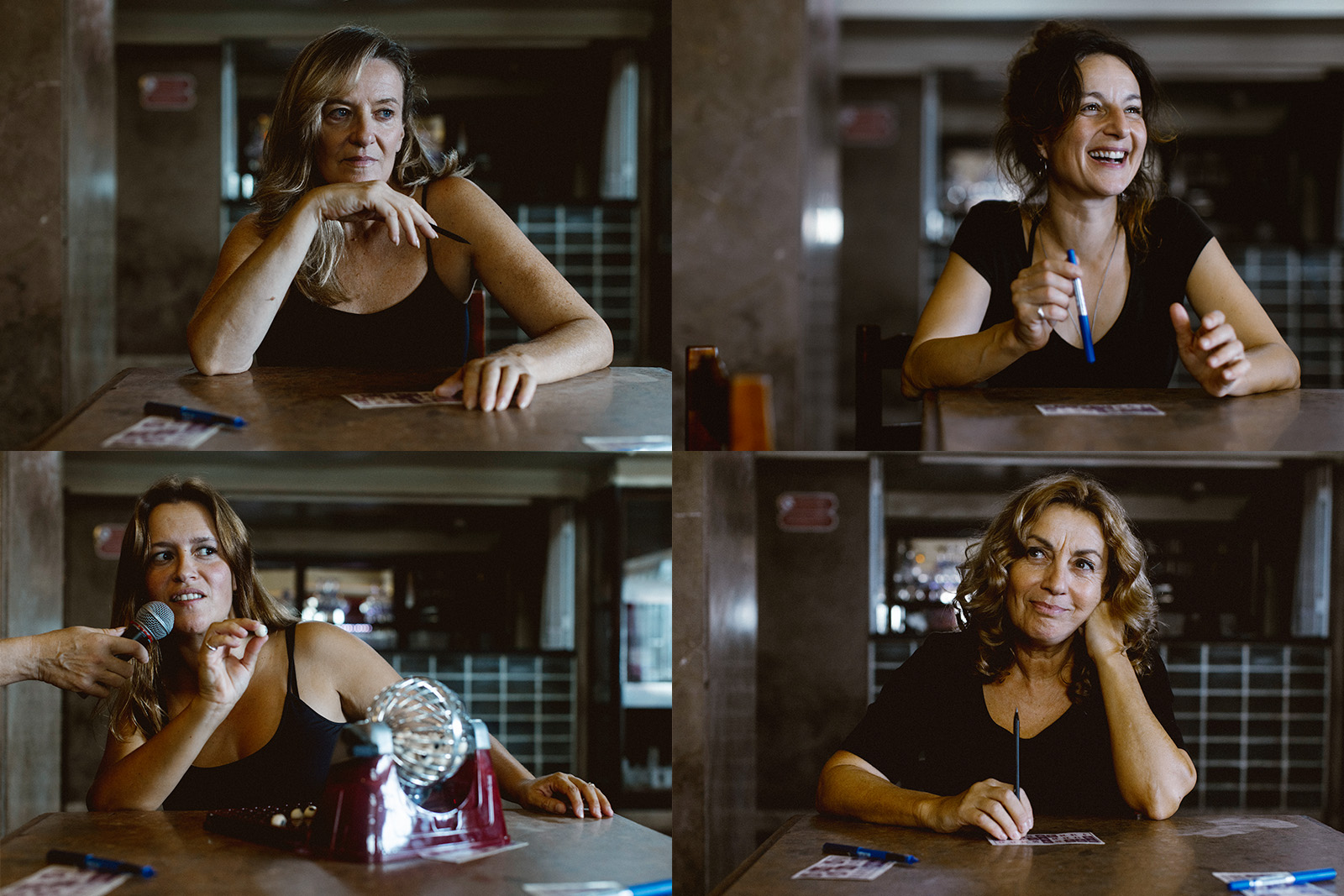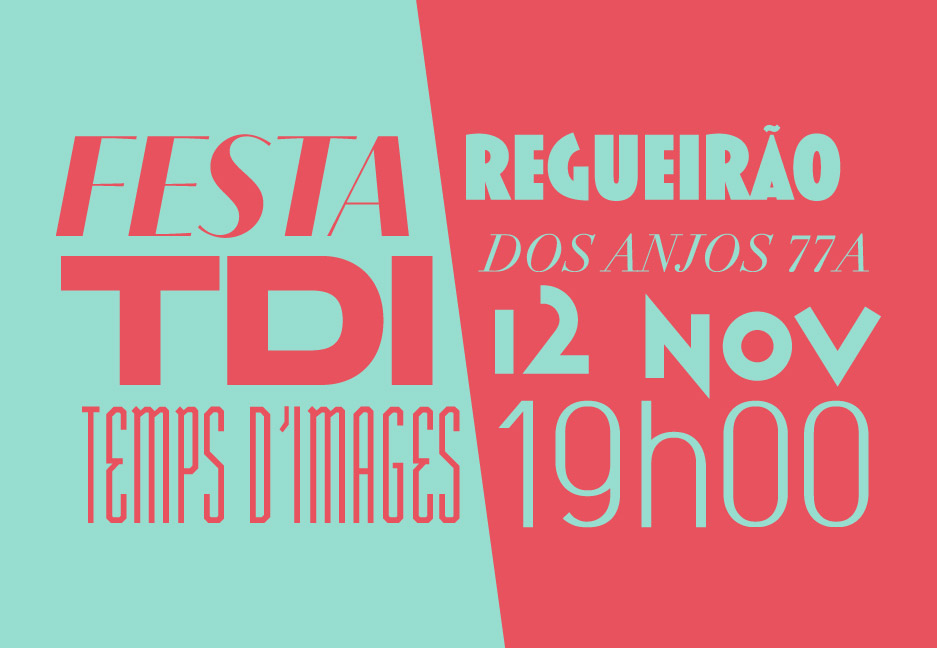MOMENT I
14 OCT — 12 NOV
Temos apenas o presente
Manuela Marques
- October 13 2023, 9pm, October 14 2023, 7pm
- Centro Cultural de Belém, pequeno auditório
- 70m
- m/12
artistic direction and text: Manuela Marques
interpretation: Ana Marta Ferreira e Filipe Matos
director: Rita Nunes
set design: Diogo Dias João
lighting design: Manuel Abrantes
image and sound design: João Hasselberg
graphics: Tomás Gouveia
executive production: Lysandra Domingues
press office and film set photography: Leonor Fonseca
technical audiovisual coordination: João Timóteo
the “acting body” laboratory: Peter Michael Dietz
translation: Eva Tecedeiro
film crew: Duarte Bernardo, João Nobre, Luís Eduardo Graça, Matilde Gonçalves
production: má-de-faca
support: CCB - Centro Cultural de Belém, c.e.m. - centro em movimento,
Centro Cultural Malaposta/Minutos Redondos/Câmara Municipal de
Odivelas, DGARTES / Républica Portuguesa, ETIC - Escola de Tecnologias Inovação e Criação, EMAV - Empresa de Meios Audiovisuais, Festival Temps D’Images, GRÄFFENBERG, PARQ.Mag
acknowledgments: Ana Apolinário, Ana do Carmo, Cristina Vilhena, Elisabete Massano, José António, Leonor Fonseca, Leonardo Marques, Maria João Fiuza, Mariana Brandão, Patrícia Ascensão, Paula Morais, Sérgio Baptista, Sofia Neuparth
'X' and 'Y' are the axes of the plot which unfolds under the watchful eye of
'Z'. In an ethereal realm, two people find themselves adrift, assisting each
other in their quest to find a way out.
In this specific place it is difficult to decipher and envision the outside
world, as the primary focus lies in embodying and expressing what resides
within—everything that remains unseen and is often misconstrued by
human beings.
Despite the potential discomfort it may cause, it is essential to bring
certain stigmatized and disregarded plights into the realm of
consciousness.
Biographies
Manuela Marques was born in Lisbon in 1982. In 2005, she completed a degree in Teaching – EVT Levels 1 and 2 from ESELx - Lisbon School of Education. In parallel, she organized artistic education courses in theatre, dance and performance, including the "Intensive Accompanied Training" she ministered at the c.e.m., and the "Acting for Film" course for the Metropolitan Film School under the tutelage of David Tucker. As actor she has worked with: Paula Sá Nogueira (Cão Solteiro), Ana Borralho & João Galante, Joana Craveiro (Teatro do Vestido), Maria Emília Correia, Miguel Moreira (útero), Ricardo Gageiro, Sofia Neuparth (c.e.m), Alexandre Lyra Leite (Inestética), Leonor Fonseca and Melissa Rodrigues. Manuela Marques conceived and presented the pieces "copo d'água" and "Reborn". Starting in 2006, she devised and directed pedagogic transdisciplinary workshops. Between 2010 and 2019 she worked as Casting Manager for fiction series and films for the channels TVI and RTP, the public television broadcaster, and also worked as booker for the Acting Department of the Elite Lisbon agency. She holds a postgraduate degree in "Communication of Culture and Creative Industries" from the
NOVA School of Social Sciences and Humanities (FCSH-Nova) and teaches EVT in public schools.
LOBA
Mariana Pacheco de Medeiros
- 19-21 October 2023, 19h
- Appleton
- 60m
- m/16
creation, interpretation and text: Mariana Pacheco de Medeiros
support to the creation: Joana Moreira
video: The Spectacular House
set design: The Spectacular House
music and sound design: Elliot Sheedy
participation in the video: Constança Silva Frias and Henrique Benavides
acknowledgements: Luísa Medeiros, Cleo Diára, Mário Coelho, Mariana Fonseca, Filipe Baptista, Pedro Baptista e Maria Ribeiro
LOBA is a multidisciplinary solo born from the desire to explore women's narratives as they journey into adulthood, embracing themes of sexuality, fantasy, and transformation. It is a performance that draws from the
power of imagery, symbols, and memories. In the video, we see a body dancing in a forest and racing against a wolf.
On stage, this same body is meticulously preparing to dance. Sensuality is pursued without fear of the grotesque. Eventually, reality merges with fiction, and only then, in a surreal lucid dream shrouded in fog, the she-wolf is born, and she kills the wolf.
Biographies
Mariana Pacheco de Medeiros graduated in Theatre from Lisbon’s Film and Theatre Scholl (ESTC) in 2015. The following year she worked and travelled in different countries in Europe and America. In April 2018, she moved to Slovenia under a European Volunteering programme, where she developed non-formal education skills. In 2019 she returned to Ponta Delgada, where she currently lives, working in the artistic, social and educational fields.
vaziopleno
Mário Afonso
- 21-22 October 2023, 21h30
- Centro de Artes de Lisboa
- 45m
- m/3
concept, direction and interpretation: Mário Afonso
artistic support: Ana Pais
set design: Elisa Pône
lighting design: Maria Alves
music and sound design: Elliot Sheedy
photography: Alípio Padilha
promotional video: Raquel Melgue
production: Carta Branca
executive production: Mariana Dias
coproduction: Festival Temps d'Images
support: CEM, Linha de Fuga, Rumo do Fumo, Balleteatro
funding: Fundação GDA - Gestão dos Direitos dos Artistas
acknowledgements: Catarina Caldeira, Patricia Cuan, Hannya Melo, Tânia Guerreiro, Sérgio Marques, Malaposta, Anabela Mendes, Renata Bottino, Rita Barreira, Sofia Campos, Teresa Dias, and Nuno Patinho.
In an online conference, André Lepécki contextualised the process that leads to the disappearance of the body. We were in the midst of a pandemic and, under those circumstances, this disappearance was also literal. As technology reshapes today's societies, the human body gradually fades into the background, overshadowed by the processes inherent to our interconnected world. The vertigo induced by the structures of life in the digital age, strongly influenced by attention capitalism, is as inevitable as the technology-driven changes, stemming from the dematerialization of many fundamental aspects of existence, reshaping our societies.
In the torrent of an exposed, increasingly fragmented life, with fragile bonds and managed from a distance, the body carves out its own space by asserting itself as a vessel for listening—a poetic gesture that seeks to offer protection to us all.
Biographies
Mário Afonso, born in Lisbon in 1969, is an artist known for his multidisciplinary creations that encompass performative, choreographic and installation works, notably "Representations" (2005), "Framework" (2022), and "Trajectory" (2023). As co-creator, he has collaborated with João Fiadeiro, Miguel Pereira, Sofia Dias & Victor Roriz, Elisa Pône, Cão Solteiro and Vasco Araújo, and Vera Mantero. In 2016, he created the
Prata da Casa collection, a set documentary videos for contemporary dance available at www.pratadacasa.pt.
Variações sobre o tempo dos Jacarandás
Sofia Dinger and Yaw Tembe
- 21 October 2023, 18h51, 22 October 2023, 18h49
- Casa da Estação
- free donation at the entrance
- m/12
Creation: Sofia Dinger and Yaw Tembe
Support: Fundação DGA
“Variações sobre o tempo dos jacarandás" (Variations on the season of the jacaranda trees) is the first collaboration between Yaw Tembe and Sofia Dinger. The piece revolves around a dialogue with the image of a
tree observed through a window and is structured into two distinct seasons: in the first, presented this autumn, the tree devoid of blossoms.
“Variações…” draws its inspiration from an old song that talks about doors, hearts, people passing by, houses. A song that has the words: Simply and Love. A woman sings for a long time. The sound of the trumpet sounds like something eerie. The flowers are indecisive.
Biographies
ANDROMEDA
Luciana Fina
- 21 outubro 2023, 19h
- Cinemateca Portuguesa, at DocLisboa, Riscos section, Co-organizer Istituto Italiano di Cultura di Lisbona
- 73m
Image, Editing And Production: Luciana Fina
Young Viewer: Francesca Totire
Reading: Marcello Urgeghe
Research Support: Rai Teche, Francesca Cadin
Design Software: Paolo Solcia
Assembly And Production Assistant: Vítor Carvalho
Color: João Nunes
Sound Mixing: Elsa Ferreira
Technical Direction: Edgar Alberto
Image Consultancy: Rui Xavier
Press Office: Maria João Moura
Production Dossier: Pedro Ramalhete, Bernardo Miranda
Administrative Support: Ana Bordalo, Ana Calheiros
Carpentry Support: Fábio Primoroso
Graphic Support: Mário Sousa
Translations: José Luís Costa (Italian), João Ayton (French), Luisa Crick (English)
Ar Films Production: Lafstudio
Producers: Alexandre Oliveira, Luciana Fina
Associate Producer: António C Mara Manuel, Duplacena
With The Collaboration Of: Raiteche
Support: Istituto Italiano Di Cultura
Support For The Production Of The 2021 Exhibition: Dgartes, Foundation Calouste Gulbenkian
The Film Is Part Of The Doctoral Project “From One Screen To Another: A Theoretical-Practical Study On Intermedial Narratives”, Performing Arts And Moving Image, Fine Arts, University Of Lisbon
Evocation of the artistic and cinematic expression of 1960s and 1970s’ public television in Italy. It is the early age of public broadcasting, during which cinema also questions its relation to reality and video art emerges as an experimental answer. The character, a young female viewer, committed to exploring and trying out a new medium, carries us through time. Blurring the lines between document and creation, the film places the viewer between the early age period of television and the period of time she spends in the room, between memory and imagination, utopia and experimentation.
Biographies
Italian filmmaker and artist, after a long collaboration with Cinemateca Portuguesa as a programmer, she made her directorial debut in 1998, joining the generation of directors who gave new life to documentaries in Portugal. Between 2002 and 2003, with the CCM installation and the CHANTportraits triptych, she began her journey in exhibition spaces.
The extensive body of work, films, film installations and site-specific, has been presented internationally at film festivals and exhibitions, being represented in the Modern Collection of the C. Gulbenkian Museum, in the Nouveaux Medias Collection of the Center G.Pompidou and in the Collection of State Contemporary Art. Researcher in Moving Image Arts, collaborator at CIEBA.
KALI
Joana de Verona
- 27 - 28 October 2023, 20h
- Rua das Gaivotas6
- 135m | free donation at the entrance
- m/12
Creation: Joan of Verona
Performers on stage: Lucília Raimundo, Mélanie Ferreira, André Teixeira will operate on stage.
Sound Design and musical composition: Inês Carincur
Lighting design: André Teixeira, Joana de Verona, João Pedro Fonseca.
Light, sound and video operation: André Teixeira
Research support: Laura Pujol
Creation support: Lígia Soares
Creation support: Sofia Dinger
Costumes: Çal Pfungst
Executive production: Inês Sampaio
Administrative and financial management: Nuno Eusébio
Production: Alquimia Nómada
Interpreters in the video art:
Inês Vaz, Isabel Zuaa, Sofia Dinger, Joana de Verona, Lucília Raimundo
Video art technical team:
Light: Felipe Drehmer and João Pedro Fonseca
Camera and director: Joan of Verona
Technical support: João Pedro Fonseca and Miguel Nunes
Editing and sound design: Joana de Verona
Reassembly of the video for the installation: Matilde Calado and Joana de Verona
Sound mastering: Noiserv
Support: GDA Foundation, Teatro Meridional, Rua das Gaivotas 6, Festival Temps D´Images
Acknowlegements: Inês Vaz, Lucília Raimundo, Isabel Zuaa, Sofia Dinger, Miguel Nunes, Felipe Drehmer, João Pedro Fonseca, Noiserv, Nuno Eusébio, Paulo Mota, Mariana Brandão, Matilde Calado, Igor Jesus, Ana Rita Nabais, Hugo F.Matos, Rudolfo Quintas , Gonçalo Castelo Soares, Escola de Mulheres, Natália Luiza and the Teatro Meridional team.
Performance/ Installation.
In this creation we work with the oneiric universe, delving into the mystery and power of the unconscious. We focus on the relationship between the video installation and the bodies of the performers. It is an exploration based on the idea of repetition and continuity as if it were a dream, as if time were suspended.
Biographies
Joana de Verona (b. 1989) is a Portuguese-Brazilian
actor/performer/director.
She began her training in theatre and dance in 1998 and her professional practice in film in 2004. She studied theatre at Chapitô, and enrolled in Joana Craveiro's performance creation course. Verona graduated in Theatre from the Lisbon’s Film and Theatre Scholl (ESTC), and attended courses in theatre and dance with: Norman Taylor, John Mowat, Deborah Hay, Peter Michael Dietz, Mathilde Monnier, Jan Fabre Teaching Group(Antwerp), John Romão, Victor Hugo Pontes, Miguel Seabra, among others. In the theatre she has worked with: Gonçalo Amorim, Vânia Rovisco, Carlos Avillez, Marco Martins, Luís Miguel Cintra, Mónica Garnel, Beto Covil, Miguel Seabra, Mónica Calle and Christiane Jatahy. She studied film directing at the Ateliers Varan school (Paris). She directed the documentary "Chantal", which premiered at Indie Lisboa. It is currently available on the Filmin platform. She has collaborated in films by various directors in Portugal, France, Brazil, Germany and Italy. The SPA Best Actress awarded was the latest prize she received. As a creator she conceived, together with Doroty Parker, "Sexes", which was presented at São Luíz Municipal Theatre. She
co-founded the Fiasco theatre company and co-created "Silêncio pós secador" and "Puta de Vida". She created the performance "C'est ma Première Fois", presented at Casa Conveniente. She also co-directed the videoart piece "Cara", co-produced the film "Yulya", and co-created the performance MappaMundi.
Trans*performatividade
Aura
- 2-3 November 2023, 19h
- Mono Lisboa
- 60m
- m/12
artistic direction: Aura
interpreters: Aura, Eríc Santos, Iara António, Mia Brandão and Tiago Aires Lêdo
stage management and set design: Hugo Veiga
sound design: Diana XL
video and photography: Sofia Calvet
support to the creation: Ana Rocha, André E. Teodósio, Mercedes Quijada, Mickaël de Oliveira, Pê Feijó, Pedro Barreiro, Xavier de Sousa
support: Câmara Municipal de Setúbal, A Gráfica - Centro de Criação Artística, Teatro Municipal do Porto, CAMPUS Paulo Cunha e Silva, Instável - Centro Coreográfico, Temps d'Images, mono lisboa, Electronic Warfare, fAUNA | Teatro da Didascália, A Oficina
“Trans*performatividade" (Trans*Performativity) is a project that consists of transposing trans* experiences into contemporary practices that merge the sharing of stories with collective performances. The movement subjectively represents processes of transformation and metamorphosis, the scenography proposes an innovative and safe space, the costumes weave individual and collective identity and the light design gives visibility to under-represented issues, letting the audience perceive, understand and participate freely.
Biographies
AURA is a transdisciplinary artist, who holds an MA in Performance Making from Goldsmiths, University of London, and a degree in Fine and Intermediate Arts from the Academy of Fine Arts in Gdańsk (ESAP, Poland). Creations include "A Transformação do Mundo" (2022, Galerias
Municipais; 2023, Mala Voadora) and "7 ≈ 8" (2021-2023, Bienal de Arte Contemporânea da Maia (all of them venues in Portugal), The Place (London), Migration Matters Festival (Sheffield), STOFF-Stockholm Film Festival.
A Bola de Cristal
Luísa Fidalgo
- 11 November 2023, 21h, 12 November 2023, 16h
- Café Teatro Cinearte (A Barraca)
- 90m
- m/12
artistic direction, text and interpretation: Luísa Fidalgo
artistic assitant and stage design: Filipe Pereira
interpreters: Inês Rosado, Lígia Roque e Rita Lello
lighting design: Tasso Adamopoulos
sound design: Vera Condeço (Neon Soho)
production: Leonardo Garibaldi and Teatro Reflexo
graphic design: Carolina Peres
audiovisual support: Filipe do Canto (Grama)
acknowledgments: Lewis Seivwright, Cooperativa Dramatúrgica, Patrícia
Portela, Mickaël de Oliveira and Teatro Oficina
“A Bola de Cristal” (The Crystal Ball) holds memories of a mother who passed away, a Portuguese woman called Rosário (1950-2009) who left behind more than 30 diaries and a captive place at the Bingo Parlour.
Represented by three characters, and based on the triptych “mãe-mulher- Rosário” (mother - woman - Rosário), this performance will transform the numbers in the tombola into memories. A tragi-comic and unrepeatable game (like life), were the desire — more than shouting "bingo!" — is to reflect on loss as a universal feeling.
Biographies
Luísa Fidalgo is a multidisciplinary artist, creator and actor. With a degree in Communication Sciences, she graduated in acting with Yvonne D'Abbraccio (Rome) and at Esper Studio (NY). She created and starred in “The Coffee Shop Series” (broadcasted by SIC Radical and by RTP2),
“Psychodrama” and “Lisboa Azul”. She was awarded the best actress award at the Dublin ISFMF, for her role in “Maria”, directed by Mariana Marques, she won. In the theatre she worked with the Lisbon Players, Teatro Reflexo and Casa Cheia, for which she co-wrote the text of “The Banquet.” The performance “1 Ano Antes”, the first part of a diptych, premiered in November 2022.
TDI Party at Duplacena77
- 12 November 2023, 19h
- Duplacena77
We're celebrating the end of Moment II of Temps d'Images 2023 with a party at Duplacena's new venue!
From 7pm, we'll be welcoming everyone who wants to join us and celebrate the eight works that TdI has shared with the city of Lisbon!
Biographies
MOMENT I
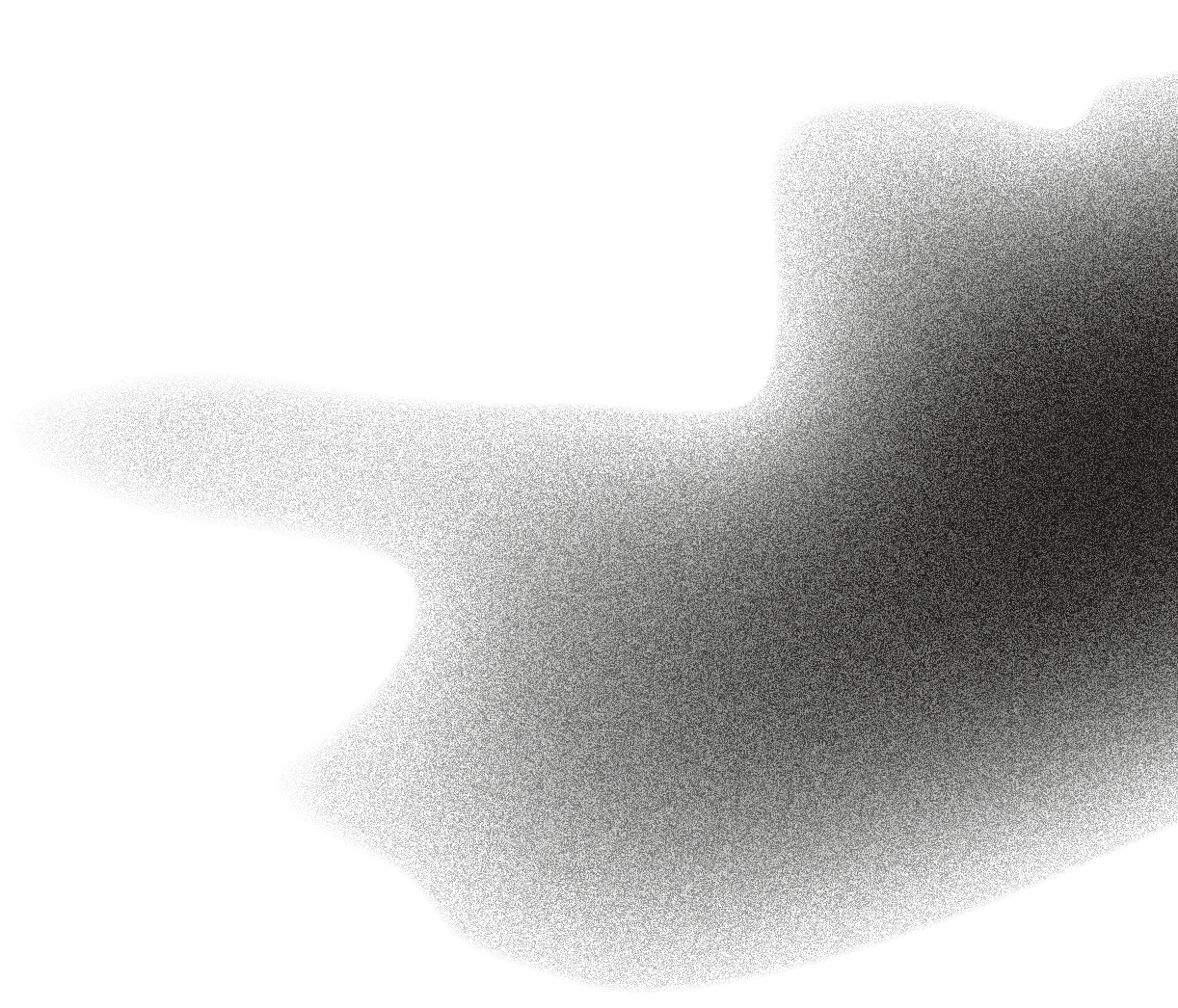
VIEW PROGRAM
24 MAY- 11 JUN

MOMENT I

